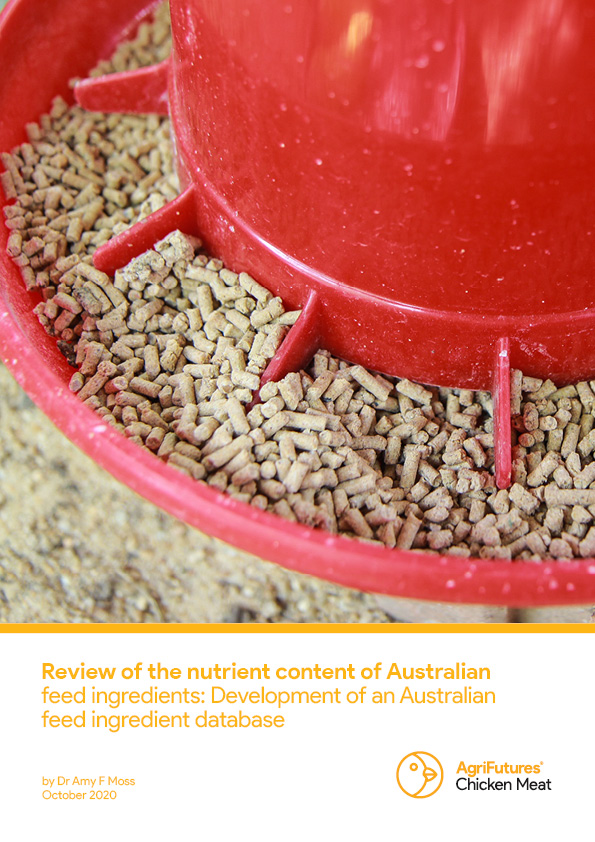Feed represents the primary cost of broiler production, and the formulation of cost-effective diets that meet broiler nutritional requirements is critical. To ensure this objective is met, nutrient specifications of feed ingredients must be accurately determined. Due to the tight time constraints and fast pace of the industry, feed ingredients delivered to the feed mill are unable to be analysed via wet chemistry. Consequently, Near Infrared (NIR) calibrations are often used in integrated operations to estimate the nutrient composition of feedstuffs. However, these readings often end up being received as ‘historical’ data as it can be some time before they reach the nutritionist and due to practical constraints, consultant nutritionists may not have access to NIR and must rely on book values. For these reasons, Australian broiler nutritionists have expressed concern about the many nutrient specification databases with dated information or that lack Australian-specific data.
A database was constructed containing recent Australian and global data on 42 common Australian feed ingredients. One of the main observations is that the standard deviation or variability of the Australian data was quite high, particularly in relation to the global data. While we have some excellent data, it is clear that our vast continent brings challenges in consistency as the wide variation of environments, climates, growing methods, cultivars, etc. all likely contribute to this variation. This is problematic because the Australian data is almost as variable as the global data, but contains a fraction of the number of samples. Thus, the accuracy of predicting the true mean of the population is poor for many ingredient nutrient specifications. However, the present data may be quickly enhanced by ensuring all data provided presents the number of samples or standard deviation, which is critical for assessing the extent of variation in our feed ingredients and, thus, the level of uncertainty in diet formulations.





